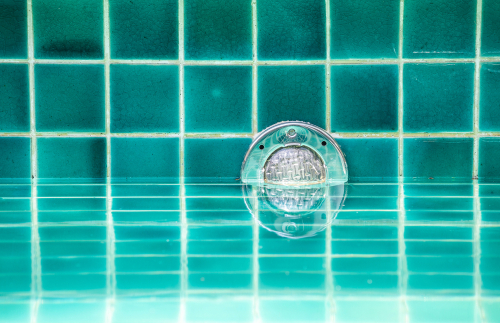
Algae and Scale on Pool Walls and Tiles
August 2, 2023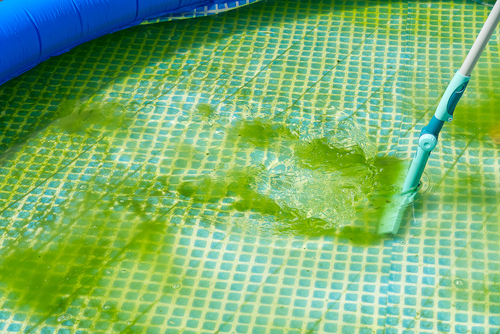
How to Identify Different Types of Algae in Your Pool?
September 13, 2023Swimming Pool Resurfacing
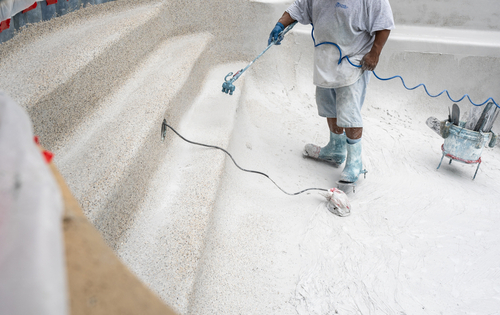
Swimming Pool Resurfacing
Swimming pool resurfacing is a vital process that holds significant importance for pool owners in Singapore.
This rejuvenating procedure not only revitalizes the appearance of the pool but also enhances its overall functionality.
As pool surfaces naturally degrade over time due to exposure to various elements, resurfacing becomes an essential step in maintaining a safe, beautiful, and enjoyable swimming environment.
This article will delve into the key aspects of swimming pool resurfacing, from understanding the reasons behind surface deterioration to the benefits of using different resurfacing materials.
Table of Contents
The Importance of Pool Aesthetics
A well-maintained swimming pool is a focal point in outdoor spaces, adding elegance and allure to the property.
The visual impact of a pool cannot be understated, as it contributes significantly to the overall aesthetics of the surroundings.
However, a worn-out and deteriorating pool surface can have the opposite effect, diminishing the property’s overall appeal.
This is where pool resurfacing steps in.
By giving the pool a fresh and inviting appearance, resurfacing creates a visually pleasing outdoor environment for residents and guests.
Understanding Pool Surface Deterioration
Numerous factors contribute to the deterioration of pool surfaces over time.
The constant exposure to chemicals used for pool sanitation and the effects of weather conditions and regular usage gradually wear down the surface.
Cracks, stains, and discoloration are common consequences of this deterioration, impacting the pool’s appearance and safety.
Rough textures and uneven surfaces affect the visual appeal and pose discomfort and potential hazards to swimmers.
Signs That Resurfacing Is Needed
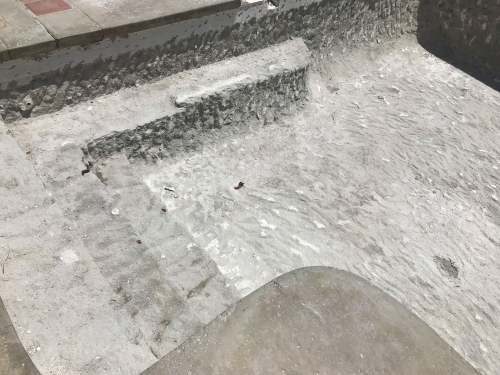
Pool owners must know the signs indicating that their pool requires resurfacing.
Cracks that appear in the surface, no matter how small, can lead to more extensive damage if not addressed promptly.
Additionally, a rough texture and fading color indicate wear and tear. These signs diminish the pool’s aesthetics and affect its functionality and safety.
Timely resurfacing can prevent further deterioration and ensure a more extended lifespan for the pool.
Benefits of Pool Resurfacing
The advantages of pool resurfacing extend beyond aesthetics.
A smoother and well-maintained surface enhances the comfort and safety of swimmers, providing an enjoyable swimming experience.
Furthermore, resurfacing can considerably extend the lifespan of the pool. Addressing existing issues and providing a fresh layer of protective material makes the pool more resistant to future damage, reducing the need for frequent repairs and maintenance.
Resurfacing Material Options
Regarding pool resurfacing, various material options are available, each with unique characteristics and advantages.
Plaster, pebble aggregate, and quartz are among the commonly used materials.
Plaster offers a smooth and traditional finish, while pebble aggregate provides a textured look that is visually appealing and slip-resistant.
Quartz, on the other hand, boasts durability and a wide range of color options.
The choice of material plays a crucial role in determining both the appearance and longevity of the pool surface.
The Resurfacing Process
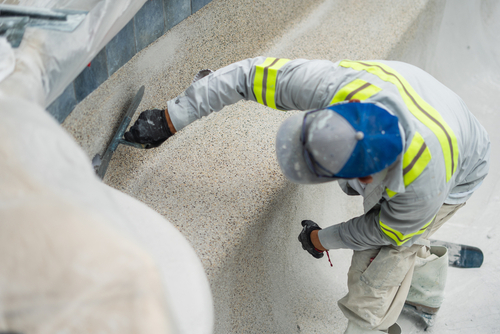
The pool resurfacing process involves several essential steps that ensure a successful outcome. First, the pool is drained to expose the existing surface.
Any necessary repairs are made, and the surface is thoroughly cleaned and prepared.
The new resurfacing material is then applied, and proper finishing techniques are employed to create a smooth and visually appealing surface.
One of the most critical aspects of the process is the curing stage, during which the new surface gains its strength and durability.
Selecting the Right Resurfacing Material
Choosing the appropriate resurfacing material requires careful consideration of various factors.
Budget considerations, desired aesthetics, durability, and maintenance requirements affect decision-making.
It’s essential to balance the desired appearance and the practicality of the chosen material.
Evaluating these factors and seeking professional guidance can lead to a choice that aligns with individual preferences and needs.
Hiring Professionals for Resurfacing
While DIY projects have their place, pool resurfacing is a task best left to experienced professionals. Hiring professionals ensures that the resurfacing process is executed with precision and expertise.
These experts have the necessary skills, knowledge, and equipment to effectively manage every aspect of the project.
Attempting a DIY resurfacing project can lead to complications, inadequate results, and even potential risks, making the investment in professional services well worth it.
Planning and Budgeting
Careful planning and budgeting are vital steps in any resurfacing project. Creating a realistic budget that covers material costs, labor, and potential contingencies is essential.
Obtaining quotes from reputable contractors aids in estimating the overall cost accurately.
By planning ahead and accounting for all possible expenses, pool owners can avoid unexpected financial challenges and ensure a smooth resurfacing process.
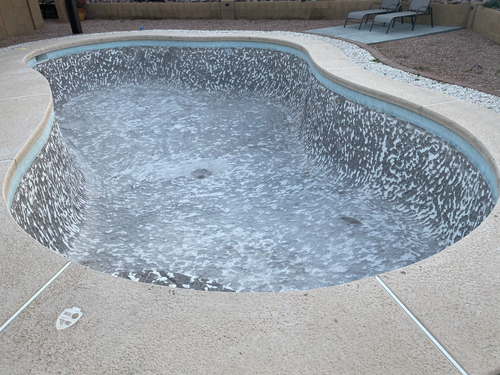
Impact on Property Value
A well-maintained and visually appealing swimming pool positively impacts property value.
Potential homebuyers are often attracted to properties with updated and inviting pools, recognizing the value of this additional feature.
Therefore, investing in pool resurfacing enhances the current living experience and can lead to a higher return on investment when it comes time to sell the property.
Aftercare and Maintenance
Maintaining the newly resurfaced pool surface is crucial for its longevity and continued appeal.
Regular cleaning and maintenance routines are necessary to prevent staining, scaling, and surface degradation.
It’s recommended to follow manufacturer guidelines and consult with professionals to establish an effective maintenance regimen.
Routine inspections enable early detection of any emerging problems, allowing for timely intervention and prevention of further damage.
Environmental Considerations
As environmental consciousness grows, considering the impact of pool resurfacing on the ecosystem is essential.
Opting for eco-friendly resurfacing materials and practices contributes to sustainability efforts.
Some materials have a lower environmental footprint, and practices that minimize chemical runoff and waste are more environmentally responsible.
By making conscious choices, pool owners can enjoy their revitalized pool while also contributing to a healthier environment.
Swimming Pool Resurfacing – Conclusion
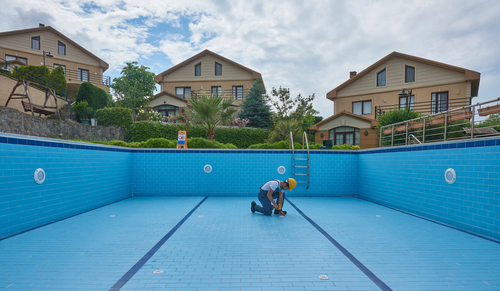
In conclusion, swimming pool resurfacing is a transformative process that holds significant value for pool owners in Singapore.
Beyond the enhancement of aesthetics, resurfacing contributes to the pool’s safety, longevity, and overall enjoyment.
By understanding the signs of deterioration, exploring material options, and hiring experienced professionals, pool owners can embark on a resurfacing journey that rejuvenates their outdoor space.
With proper planning, maintenance, and consideration for the environment, a resurfaced pool becomes a cherished investment that enhances the beauty and functionality of the property.
Are you seeking professional and reliable swimming pool repair or cleaning services in Singapore? Contact us today!



